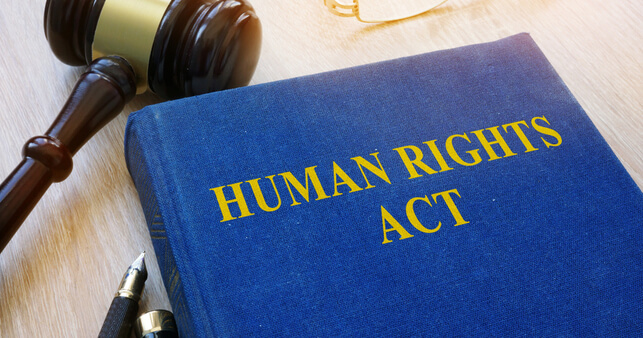
The Parental Leave and Employment Protection Act 1987 (the Act) is New Zealand legislation that aims to:
Set minimum entitlements with respect to parental leave for male and female employees
Protect the rights of employees during pregnancy and parental leave
Entitle certain individuals to up to 18 weeks of parental leave payments
Parental leave payments
The main purpose of the Act is to give natural biological parents and other individuals who are the permanent primary carer of any child under the age of six the right to receive paid parental leave entitlements, and under the right circumstances, gain access to government-assisted paid parental leave.
The Act clearly outlines the criteria for employers to follow and the entitlements that employees with single or multiple jobs can receive. The Act also specifies the threshold employees must satisfy to be entitled to parental leave payments and other benefits.
Who is a primary carer?
According to the terms of the Act, a primary carer is defined as:
A female who is pregnant or has given birth to a child
Her partner, if she has transferred all or part of her entitlement to a parental leave payment to her partner (or if they have succeeded it), in which situation the partner is the primary carer for the period of time the entitlement is transferred
A person, other than the birth mother or her partner, who takes permanent primary responsibility for the care, development, and upbringing of child who is under the age of 6 years
‘Partner’ is defined as the spouse or partner of the mother or nominated primary carer, who can be male or female, same sex or different sex.
Key Points for Businesses
As an employer, it is important to understand the terms and conditions of the Act. By having fair parental leave policies in place, it means employees can transition into their primary carer responsibilities without fear of losing their existing employment or financial aid.
Below are some key employee entitlements that must be considered when creating and implementing a parental leave policy:
For an employee who meets the 6-month employment test
An employee meets the 6-month criteria for parental leave if they will have been employed by the same employer for at least an average of 10 hours a week in the 6 months before the due date of the baby, or the date they or their partner becomes the primary carer of the child.
Up to 26 weeks of primary carer leave
If the employee is eligible to receive parental leave payments, up to 26 weeks of government-funded parental leave payments
An employee who does not meet the 6-month employment test but who meets the parental leave payment threshold test is entitled to:
If the employer agrees, a period of negotiated carer leave, and
Up to 18 weeks of parental leave payments and up to 13 weeks of preterm baby payments
For an employee who meets the 12-month employment test
An employee meets the 12-month criteria for parental leave if they have been employed by the same employer for at least an average of 10 hours a week in the 12 months before the due date of the baby or, the date they or their partner becomes the permanent primary carer of the child.
Up to 26 weeks of primary carer leave
Up to 52 weeks unpaid extended leave (including up to 26 weeks of primary carer leave taken)
If the employee is eligible to receive parental leave payments, up to 26 weeks of government-funded parental leave payments
For spouses and partners who will be the child’s primary carer
If they meet the 6-month employment test, up to 1 week of partners leave and up to 26 weeks extended leave, to be shared with the child’s primary carer. The mother can transfer up to 26 weeks of parental leave payments to partner if the partner is the primary carer for this time.
If they meet the 12-month employment test, up to 2 weeks of partner’s leave and up to 52 weeks extended leave, which may need to be shared with the child’s primary carer. The mother can transfer up to 26 weeks of parental leave payments to partner if the partner is the primary carer for this time.
Self-employed persons may take as much parental leave as they wish and,
If they meet the parental leave payment threshold test, receive up to 26 weeks of parental leave payments if they are not working to take care of the child.
Rights and Obligations After Commencing Parental Leave
According to the Act, an employee’s position must be kept open in the case of parental leave not exceeding four weeks and, unless there is a case of redundancy, or where a temporary replacement is not reasonably practical due to it being a key position, must be kept open in the case of longer periods of parental leave.
Whether the role is considered a key position will depend on the size of the employer’s enterprise and the training period or skills required to do the job.
Other factors that employers need to be aware of after commencing parental leave include:
An employee is entitled to go back to work for occasional Keeping in Touch days (KIT) for a total of 64 hours during parental leave, with certain restrictions
An employee is not considered to have returned to work if he or she performs these 64 hours or fewer of paid work during the parental leave payment period
An employee can request the early ending or extension of parental leave in certain circumstances, but usually the employer needs to agree to it.
An employee may return to work early without the need for permission from the employer if:
The employee or their spouse or partner suffers a miscarriage
The child is stillborn or dies, or
If the employee or the employee’s spouse or partner fails to become or ceases to be the primary carer of the child
For advice on how to incorporate the Parental Leave and Employment Protection Act into the workplace, contact Employsure on 0800 568 012.



